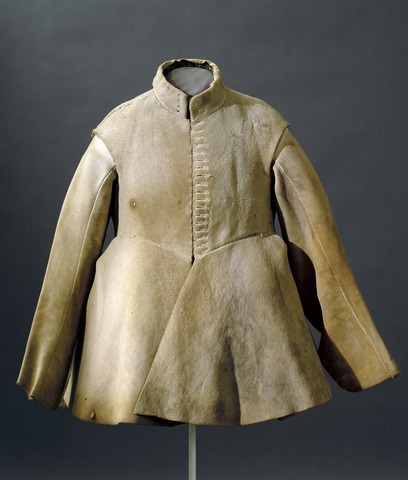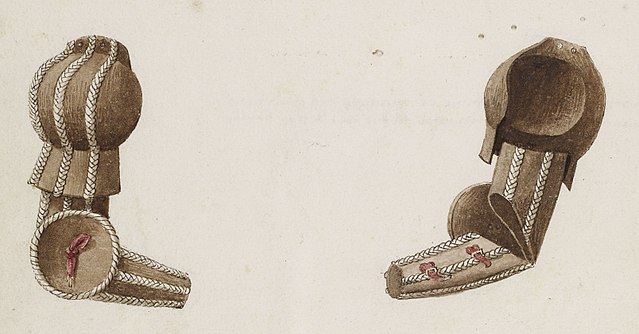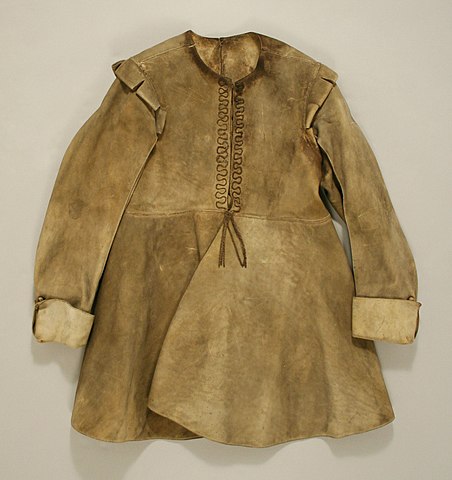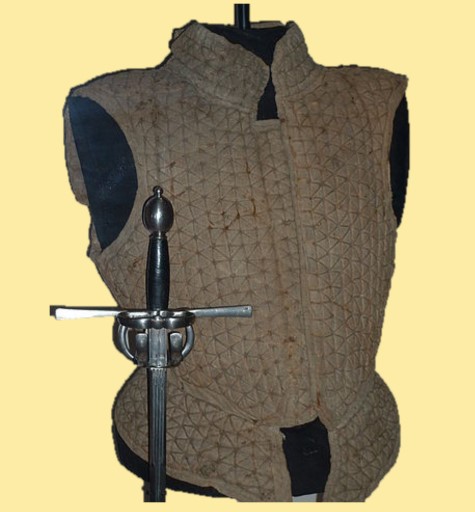
| Further Reading | What Was Medieval Armor Made From? |
Aside from plate armor, the most common form of medieval armor that you would have seen was a set of leather armor. Medieval thick leather was more than capable of protecting a soldier from standard blows from swords, spears, and even arrows. On top of this, a full set of leather armor weighed significantly less than a set of full medieval plate armor.
Generally speaking, medieval leather weighed between 10-30 lbs and could stop most forms of medieval weaponry. The reason that leather armor weighed so much more than previously thought was that metal plates were often stitched into layers for added protection.
Here at The History Ace, I strive to publish the best history articles on the internet. If at the end of this article, you enjoyed it then consider subscribing to the free newsletter and sharing it around the web.
Without further ado; here is just how much a full set of medieval leather armor would have weighed.
Boiled Leather Medieval Armor Weight

The most common form of leather armor that you would find on the medieval battlefield was the age-old boiled leather.
For nearly 2,000 years humans have built armor sets using hard leather that was pressed together and then boiled to make it extremely durable and hard. This boiled leather was used by the Greeks, Romans, and even far eastern cultures such as the Huns.
Not only is boiled leather armor easy to build it is also extremely light when compared to medieval plate mail. A set of medieval plate mail might weigh in the range of 60-120 lbs! On the other hand, a quality set of medieval boiled leather armor would only weigh as much as 20 lbs. Leather simply weighs less them metal.
However, leather did not offer the same level of protection and durability that plate mail did. Boiled leather was only capable of sustaining one or two blows during battle before falling apart and exposing the soldier. Plate mail on the other hand was extremely efficient and could turn a knight into an unstoppable force on the battlefield.
In many ways, a set of boiled leather armor was the most a medieval soldier could expect to get. Under the leather armor they would wear several layers of heavy cloth to absorb the impact of arrows, spears, and swords. On the outside of the boiled leather armor a soldier might wear a set of chainmail to give them extra protection but this was optional.
As such, the average weight for medieval leather armor was around 20 lbs! This was just for a standard set of boiled leather armor however. If anything else was added to the leather armor then this weight estimate would go drastically up; things such as chainmail would drastically increase the weight.
The “Buff Coat” Leather Armor Weight

Towards the end of the medieval period, the average weight of leather armor started to decrease. In the very end of the medieval period small leather protective vests started to gain popularity. This was what is today called the “Buff Coat.”
These buff coats were worn by high-ranking men-at-arms and knights who needed an extra layer of protection between themselves and their plate armor. Built by layering several pieces of leather together a buff coat was capable of absorbing large impacts that would typically bruise or injure the knight.
The average weight of these buff coats ranges between 6-13 lbs depending on the style of protection needed. For knights who were competing at tournaments a significantly more durable buff coat was needed as opposed to a standard foot soldier.
This was because unlike traditional leather armor, a buff coat was designed simply to absorb the impacts dealt to armor on top of the leather. This leather armor was not designed to be the first line of defense for the soldier. Because of this the buff coat could weigh significantly less than medieval boiled leather armor.
As such, the buff coat that was used to give another layer of protection between the soldier and their armor weighed around 6-13 lbs. This weight was because this medieval leather armor was not needed to stop direct blows from weapons.
The Leather “Jack of Plate” Armor Weight

Towards the end of the medieval period the ‘Jack of Plate” became one of the most common forms of medieval leather armor.
Here a smith would take leftover pieces of metal from plate mail, cloth, and leather and weave them together. Essentially you can think of this as a primitive bulletproof vest designed to stop arrows, swords, and spears from injuring the soldier.
On average a vest of ‘Jack of Plate’ would weigh between 15-22 lbs. The weight depended on just how much leather was used along with the number of plates put into the armor.
During its peak, the ‘Jack of Plate’ could be found all over medieval England, France, Spain, and Germany. This was because it was so cost-effective to produce this type of armor and it provided excellent protection from nearly any type of medieval weapon; only firearms provided a threat against this medieval armor.
Another name for the ‘Jack of Plate’ was the medieval brigandine which was built using rivets instead of stitched cloth. Both pieces of medieval armor used leather and the brigandine often weighed only a couple of lbs more while offering similar protection.
Simply put, if you were alive during the medieval period and wanted to get leather armor the average weight you could expect for a ‘Jack of Plate’ would have been between 15-22 lbs.
Conclusion
There you have it; the different types of weights for leather armor during the medieval period.
Leather armor did not provide the best protection when compared to either chainmail or plate. However, it was better than cloth armor and could be easily produced so long as the materials were plentiful. Leather armor continued to me created for soldiers well up until the 17th century. It was not until the mass adoption of firearms that leather armor went away.
I hope you enjoyed this article here at The History Ace I strive to publish the best history articles on the internet. If you enjoyed this article then consider subscribing to the free newsletter and sharing around the web.
Further, you can check out some of my other articles below.
-
How Heavy Was Medieval Leather Armor

How heavy was medieval leather armor? Well the answer depends on just what type of leather armor we are talking about but here is the range.


